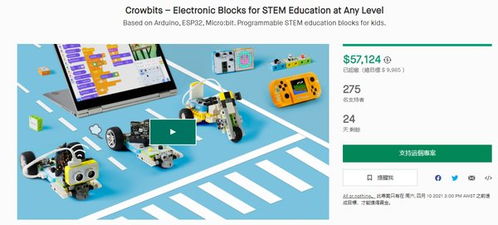您所在的位置:首页 - 科普 - 正文科普
碰撞检测的编程英文怎么写
![]() 郦蔷
2024-05-12
【科普】
793人已围观
郦蔷
2024-05-12
【科普】
793人已围观
摘要###CollisionDetectionProgramming:UnderstandingtheBasicsCollisiondetectionisafundamentalaspectofgamed
Understand the requirements of your application to select the most suitable approach.
Implementation Considerations
Particularly useful in scenarios with a large number of objects, optimizing performance.
1.
Efficiency:
4.
Documentation and Sharing:
Refine collision detection algorithms iteratively to enhance accuracy and efficiency.
Implement collision detection as a modular component, separating it from other game logic for better maintainability and flexibility.
Share knowledge and collaborate with other developers to leverage collective expertise and improve practices.
Spatial partitioning techniques used to reduce the number of collision checks.
Document your collision detection code comprehensively, including explanations of algorithms and implementation details.
2.
Modular Design:
2.
Separating Axis Theorem (SAT):
1.
Bounding Box Collision:
1.
Bounding Volume Detection:
2.
Accuracy vs. Performance Tradeoff:
Utilize data structures and techniques like spatial partitioning to reduce computational overhead.
*PointinShape Tests:* Checks if a point lies within a geometric shape.
Validate the results against expected outcomes, especially in critical systems like physics simulations.
Regularly profile and optimize code for better performance.
4.
Collision Response:
Essential for applications involving highspeed interactions, such as gaming and physics simulations.
Widely used in 2D and 3D collision detection due to its accuracy.
Common Algorithms and Techniques
Conclusion

Optimize collision detection algorithms for performance, especially in realtime applications.
3.
Continuous Collision Detection (CCD):
Types of Collision Detection
Thoroughly test collision detection algorithms across various scenarios to ensure reliability and accuracy.
Best Practices and Recommendations
Balance between accuracy and computational cost based on application requirements.
*Bounding Cylinders:* Utilizes cylinders enclosing objects, beneficial for certain types of simulations.
Collision detection is a fundamental aspect of game development, simulation, and various other fields where objects interact within a digital environment. It involves determining whether two or more objects intersect in space. Here, we delve into the essential concepts and techniques involved in collision detection programming.
Collision Detection Programming: Understanding the Basics
1.
Start Simple:
3.
Continuous Improvement:
Collision detection programming is a core aspect of creating interactive digital experiences, from video games to scientific simulations. By understanding the underlying concepts, implementing efficient algorithms, and following best practices, developers can achieve accurate and responsive collision detection systems that enhance the reali*** and immersion of their applications.
Prevents fastmoving objects from passing through others without detection.
Introduction to Collision Detection
3.
Testing and Validation:
Simple and efficient for many applications.
2.
Geometric Collision Detection:
Applies to convex shapes and determines whether they intersect by testing for gaps along potential separation axes.
*Bounding Spheres:* Employs spheres encompassing objects, suitable for rough approximations.
Collision detection is crucial for creating realistic and engaging virtual environments. It allows developers to simulate interactions between objects accurately, leading to immersive user experiences. In programming, collision detection typically involves algorithms that assess whether objects overlap or come into contact.
*Polygon Intersection:* Examines overlaps between polygons, crucial for 2D and 3D graphics.
Choose appropriate collision detection techniques considering the complexity of objects and their interactions.
*Ray Casting:* Determines intersections between rays and objects.
Involves calculating forces, velocities, and impulses to simulate realistic interactions.
Begin with basic collision detection techniques such as bounding volumes before progressing to more complex algorithms.
*Bounding Boxes:* Uses simplified rectangular boxes surrounding objects.
3.
Quadtree and Octree:
Involves comparing the axisaligned bounding boxes (AABBs) of objects.
Determines how objects react when a collision is detected.
Tags: 碰撞测试英文缩写 碰撞测试英语怎么说 碰撞检测 英文 碰撞检测的编程英文是什么
版权声明: 免责声明:本网站部分内容由用户自行上传,若侵犯了您的权益,请联系我们处理,谢谢!联系QQ:2760375052
上一篇: 挖机配件好卖的有哪些
下一篇: 新能源汽车电动机的工作原理
最近发表
- 探索日本核污染水排放,现状、影响与应对策略
- 全职妈妈离婚获2万元经济补偿,揭秘背后的真相与启示
- 王琳惊艳亮相,54岁穿短裙婚纱走秀的优雅与活力
- 继续深耕中国,共创共享机遇
- 千位歌迷在刀郎演唱会现场外,音乐盛宴如梦如幻
- 渔船遇海盗袭击,3名中国人失踪,紧急救援与深入理解
- 小米试驾体验遇尴尬,雷军秒道歉引热议
- 香港歌手李国祥去世
- 音乐人因刀郎跨越西洋乐与中国音乐的奇妙转变——深度解读与启示
- 清华毕业生失踪背后的罗生门,揭开真相与寻找答案
- 韩国救山火消防员盒饭,一份充满人间温情的瞬间
- 黄金价格的终极目标,探寻价值与投资方向
- 小区惊魂,儿童车祸事故的警示与启示
- 湖南38个机关事业单位围墙全拆,开启新篇章
- 车主掉头遇红灯,后车滴滴巧应对
- 探索云南曲靖市会泽县的地震事件
- 新郎没拉裤子拉链,新娘手动闭链的浪漫婚礼
- 10岁女孩高烧去世,被诊断为7种疾病
- 拥抱与冒险,两个小孩的温馨瞬间与泥坑的奇妙旅程
- 女厅官落马后,下属被查风波掀起波澜
- 勇敢逆行,诠释人间大爱——关于溺亡外卖员及其家庭的故事
- 大摩小摩去年四季度疯狂买A股
- 从人去楼空歌词中读懂离别的深情与生命的哲思
- 甲亢患者学功夫之路,挑战与成长
- 九牛一毛歇后语——生活中的小智慧大道理
- 多名大陆配偶被限期离台 台各界发声
- 和巧虎一起玩躲猫猫,让孩子在游戏中学习与成长!
- 王者荣耀游戏体验优化与应对关键问题的应对策略
- 探索趣味与成长的数字乐园
- 地震的力量,缅甸与汶川地震的对比
- 畅享军事模拟游戏的无限乐趣
- 缅甸地震,灾难中的救援与应对
- 董宇辉报平安,温馨时刻
- 机战王洛洛历险记全集——一场童年的奇幻冒险之旅
- 揭开美军飞行员之怒,深入了解行为后果与安全责任
- 揭开全国重名查询系统的神秘面纱,如何轻松找到与你同名的人
- 缅甸地震中的救援行动与启示
- 揭秘你的另一个星座,探索隐藏的性格密码
- 东旭集团证券违法拟被罚17亿元
- 深入解析暗黑破坏神攻略,助你成为圣休亚瑞的传奇英雄
- 专家解读地球是否进入活跃期文章标题
- 畅玩经典——实况足球10中文版的全面解析与攻略
- 牛肉市场中的中方与美国厂商,续约与挑战
- 畅玩捕鱼达人单机版,轻松体验水下冒险的乐趣
- 王钰栋应对脚踝受伤,回应与处理
- 探索自然的灯塔——野外女教师的角色与魅力
- 华阳集团,2024年净利润增长引领行业新篇章
- 探索南美大陆的地理瑰宝
- 男子做马拉松陪跑一场收入6000元
- 69岁阿姨的退休生活,自驾游的传奇之旅文章标题及内容


